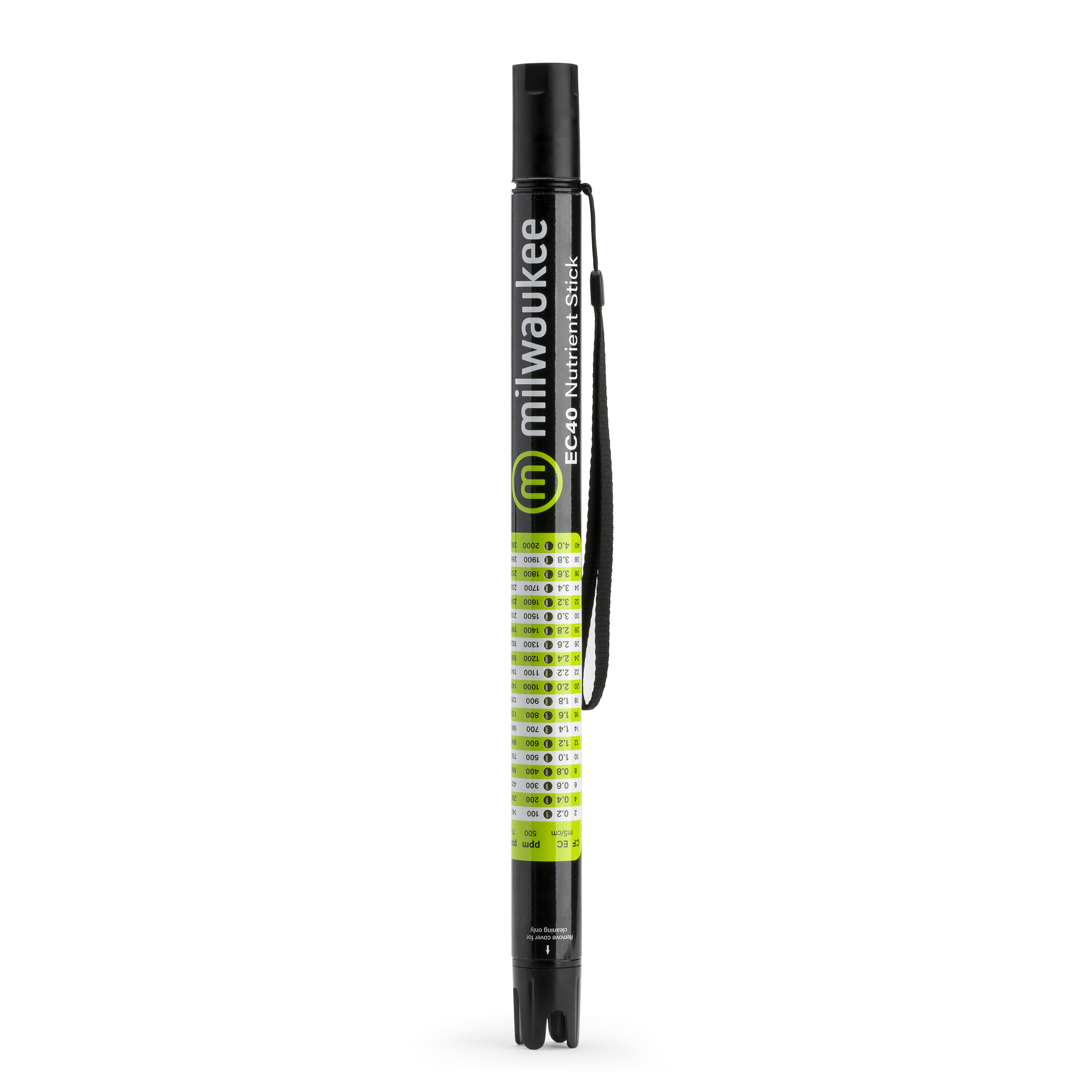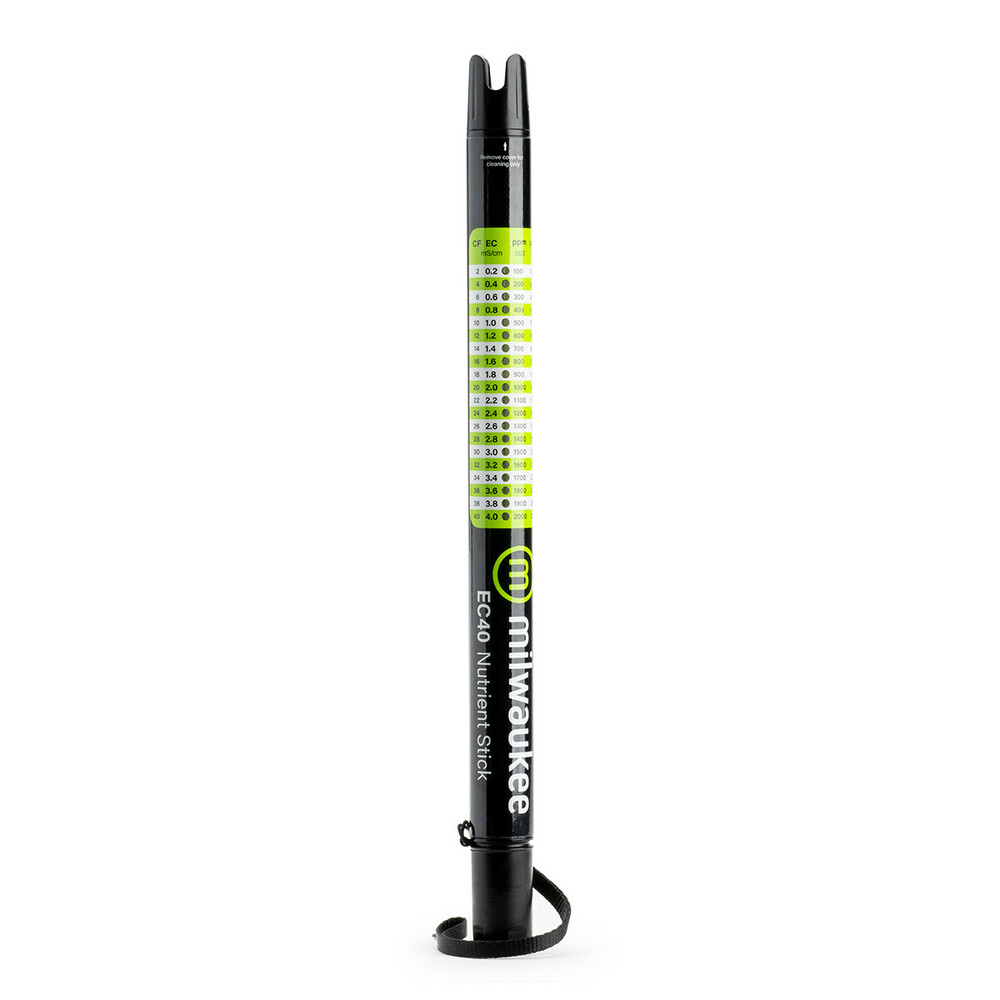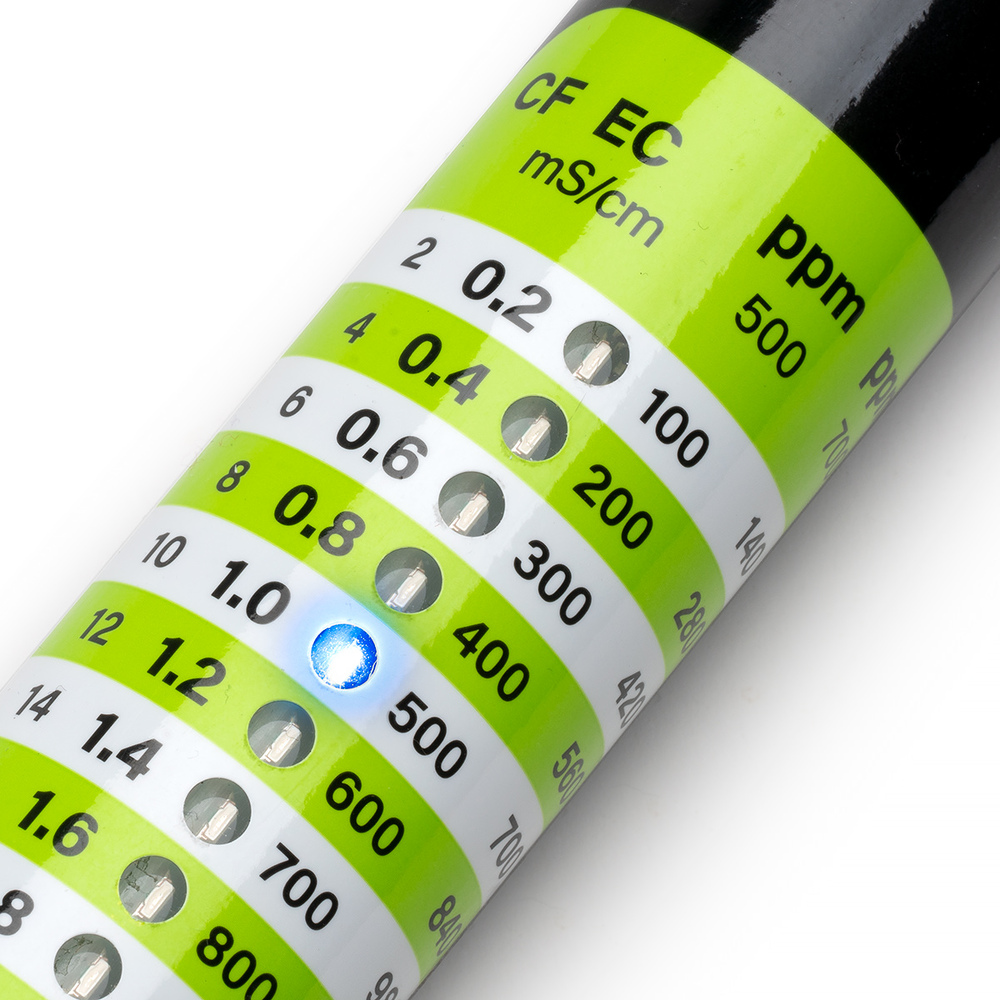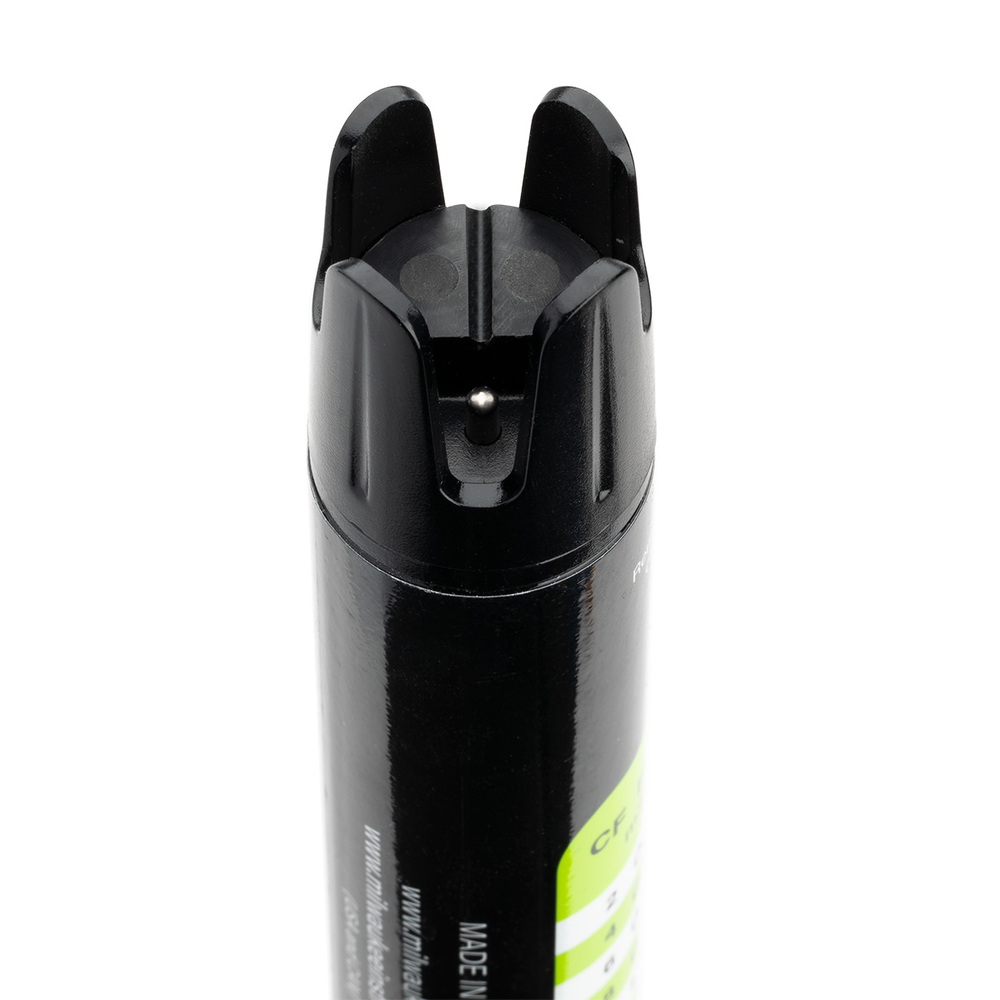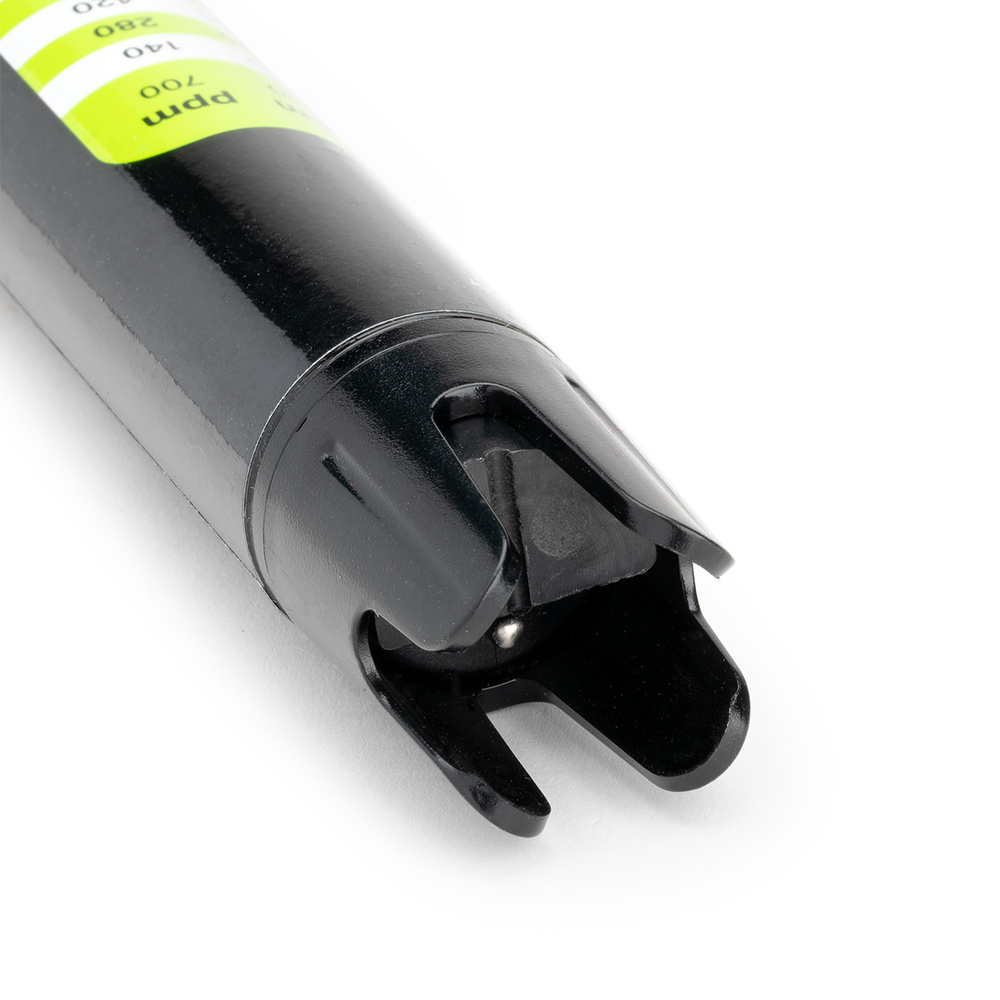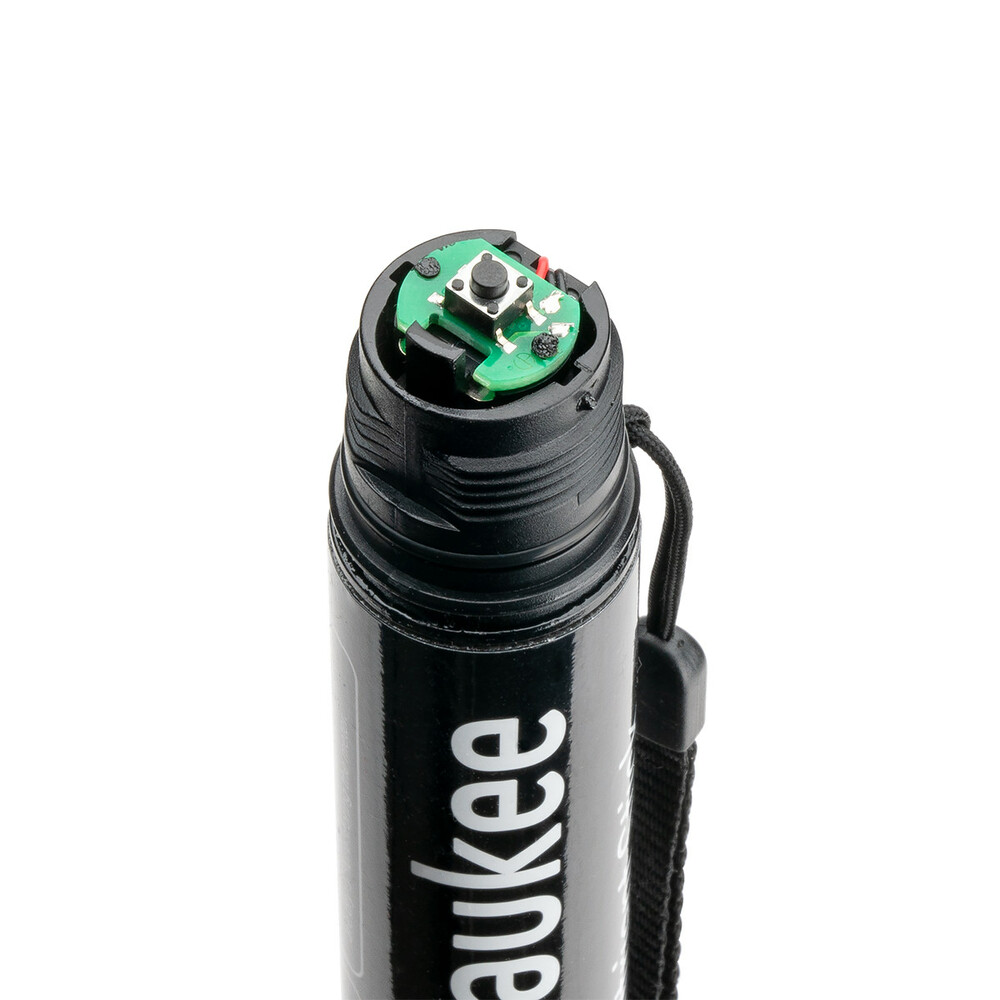Your shopping cart is currently empty.
Milwaukee EC40 EC/TDS Nutrient Meter – Simplify Nutrient Monitoring with Precision and Portability
When growing success depends on the right balance of nutrients, having a reliable tool to measure your solution’s strength is not just helpful – it’s essential. Whether you're a hydroponic grower optimizing nutrient delivery, a hobbyist maintaining healthy plants at home, or a professional cultivating in a greenhouse or farm, the Milwaukee EC40 EC/TDS Nutrient Meter offers a portable, accurate, and easy-to-use solution to take control of your feeding strategy.
With just a quick dip, the EC40 helps you monitor electrical conductivity (EC) and total dissolved solids (TDS) to ensure your nutrient mix is just right. Built with simplicity in mind but without sacrificing precision, the EC40 is ideal for everyday measurements of fertilizers, water quality, or salinity – whether you're checking reservoir levels, runoff water, or irrigation systems. Its compact design, automatic temperature compensation, and intuitive interface make it a trusted companion from bench to grow bed.
Backed by Milwaukee’s reputation for dependable water analysis tools, the EC40 helps growers and water professionals avoid nutrient lockouts, overfeeding, or imbalances that could damage plants or waste resources. It’s everything you need in the palm of your hand – because precision growing starts with precision measurement.
Why Choose the Milwaukee EC40?
- Fast, Accurate Readings – Get quick, reliable results with a range of 0.00 to 20.00 mS/cm for EC and 0 to 10,000 ppm for TDS – perfect for everyday nutrient and water quality checks.
- Dual EC/TDS Measurement – Switch between EC and TDS modes with the press of a button, giving you flexibility depending on your preference or growing system.
- Compact & Portable Design – Lightweight and handheld, the EC40 is ideal for on-the-go testing in greenhouses, hydroponic setups, farms, or even at home.
- Automatic Temperature Compensation (ATC) – Built-in ATC ensures accurate readings regardless of temperature fluctuations, giving you confidence in real-world conditions.
- Easy Calibration – One-point manual calibration with 1,413 µS/cm standard solution makes recalibration quick and effortless – keeping your meter accurate with minimal effort.
- Clear Digital Display – The large LCD screen offers easy-to-read measurements in both EC and TDS modes, even in low-light environments.
Applications
Hydroponics
· Monitoring nutrient solutions for optimal plant growth
· Ensuring balanced EC/TDS levels to avoid plant stress or nutrient deficiencies
Horticulture & Agriculture
· Fertigation control for soil and soilless cultivation
· Managing salinity levels in irrigation water
Greenhouses
· Maintaining ideal nutrient concentrations in closed-loop systems
· Preventing salt buildup in growing media
Home Growing
· DIY growers managing nutrient solutions for personal crops
· Ensuring consistency in EC/TDS for healthier plants
Aquaponics & Aquaculture
· Monitoring TDS in freshwater tanks to ensure aquatic life health
· Checking mineral levels for optimal water balance
· Balancing nutrients for both fish and plants
· Monitoring dissolved solids in water for system health
Water Treatment
· Measuring TDS to assess water purification efficiency
· Monitoring water quality in filtration systems
Environmental Monitoring
· Field measurements of EC/TDS in rivers, lakes, and groundwater
· Assessing water salinity in environmental studies
Education
· Practical tool for science experiments and classroom demonstrations
· Teaching principles of water chemistry and plant nutrition
Proper Care & Maintenance
To ensure consistent accuracy and extend the life of your Milwaukee EC40:
- Rinse
After Each Use
Always rinse the probe with distilled water after testing to prevent buildup from nutrient or salt residues. - Calibrate
Regularly
Use Milwaukee’s 1,413 µS/cm calibration solution to calibrate frequently, especially if the meter is used daily or in high-concentration environments. - Store
Properly
Keep the meter in a clean, dry place and avoid extreme temperatures. Remove the battery if not used for extended periods. - Handle
with Care
Although built for portability, avoid dropping or exposing the probe to aggressive chemicals or physical damage.
Your growing success starts with accurate nutrient control. Trust the Milwaukee EC40 to deliver fast, precise EC and TDS readings – every time.
Specifications
Application
Hydroponics
In hydroponic systems – where plants grow in nutrient-rich water rather than soil – maintaining the right balance of dissolved nutrients is absolutely critical. Plants absorb what’s available in the water, and if the nutrient concentration is too low or too high, it can lead to poor growth, leaf discoloration, or even plant death. That’s where the Milwaukee EC40 becomes essential.
The EC40 measures electrical conductivity (EC) and total dissolved solids (TDS), both of which indicate the concentration of nutrients in your hydroponic solution. A balanced EC/TDS level ensures that your plants are getting the nutrients they need – no more, no less.
· Too low, and your plants may suffer nutrient deficiencies, leading to weak growth or pale leaves.
· Too high, and you risk nutrient lockout – when excess minerals in the water block the plant's ability to absorb essential elements.
Regularly checking EC/TDS levels with the EC40 allows growers to adjust their nutrient mix on the spot, helping to prevent issues before they start, support faster growth, and increase yields with greater consistency.
Whether you’re managing a small home system or a commercial greenhouse, the EC40 helps you stay in control of your feeding routine – saving time, reducing waste, and supporting healthy root development and overall plant vitality.
How to Use the Milwaukee EC40 in Hydroponics
- Prepare the Meter
Remove the protective cap. Rinse the probe with distilled water to ensure it’s clean and ready for testing.
- Power On
Press the ON/OFF button. The display will activate and show the current mode (EC or TDS).
- Select Your Measurement Mode
Use the MODE button to switch between EC and TDS, depending on your preferred unit or system requirements.
- Submerge the Probe
Place the probe directly into the nutrient solution. Ensure it is fully immersed for an accurate reading. Stir gently or move the probe slightly to eliminate air bubbles and ensure even contact.
- Read the Results
Wait a few seconds for the reading to stabilize. Note the EC (in mS/cm) or TDS (in ppm) value displayed.
- Compare to Ideal Ranges
Reference the optimal EC/TDS range for your specific plant type and growth stage. Adjust your nutrient solution accordingly using fertilizers or fresh water.
- Rinse and Store
After testing, rinse the probe with distilled water to remove any residue. Replace the protective cap and store the meter in a dry place.
- Calibrate Regularly
Use a standard 1,413 µS/cm calibration solution to ensure accuracy—especially if used daily or exposed to nutrient buildup.
Horticulture & Agriculture
In both traditional agriculture and modern horticulture, nutrient management is key to maximizing crop yields, improving plant quality, and avoiding costly setbacks. Whether you grow in soil or soilless media, monitoring the strength and salinity of your irrigation water is essential for healthy plant development – and the Milwaukee EC40 is a reliable tool to do just that.
One of the most important applications of the EC40 in this context is fertigation control – the process of delivering nutrients through irrigation systems. By measuring electrical conductivity (EC) or total dissolved solids (TDS), you can determine how concentrated your nutrient solution is and whether it aligns with the specific needs of your crops.
- In soil-based systems, high salinity from over-fertilization can accumulate in the root zone, harming plant health and soil structure. The EC40 helps detect and prevent such build-up.
- In soilless cultivation (e.g., coco coir or rockwool), where nutrients are delivered entirely via fertigation, accurate EC/TDS readings are vital to avoid under- or overfeeding.
Regular monitoring allows farmers and horticulturists to:
- Optimize fertilizer use, reducing waste and environmental runoff.
- Protect crops from salt stress, which can hinder nutrient uptake and water absorption.
- Maintain consistency throughout different growing stages, from propagation to harvest.
The EC40 is especially useful in fieldwork, greenhouses, nurseries, and even precision agriculture applications – empowering growers to make data-driven decisions that boost productivity and crop health.
How to Use the Milwaukee EC40 in Horticulture & Agriculture
- Prepare the Meter
Remove the protective cap and rinse the probe with distilled water to ensure no residue is present.
- Turn It On
Press the ON/OFF button to activate the EC40. The display will show the current reading mode.
- Choose EC or TDS Mode
Use the MODE button to select your preferred measurement unit:
· EC (mS/cm) for salinity and solution strength
· TDS (ppm) for overall dissolved solids
- Collect a Sample
· For irrigation water: Test directly from your water source or mixing tank.
· For soil testing: Mix a sample of your soil with distilled water (typically a 1:2 soil-to-water ratio), stir thoroughly, and allow to settle before inserting the probe into the liquid portion.
- Take the Reading
Insert the probe into the water or soil solution until submerged. Wait a few seconds for the reading to stabilize. Note the EC or TDS value and compare it to your crop-specific guidelines.
- Take Action
Adjust fertilizer concentrations or water volumes based on the results. If salinity is too high, flush the system or apply clean water. If too low, increase nutrient dosing or check for leaching losses.
- Clean and Store
Rinse the probe with distilled water after each use to avoid nutrient buildup. Replace the cap and store the meter in a dry, protected space.
- Calibrate Periodically
Use a calibration solution (e.g., 1,413 µS/cm) to maintain accuracy, especially in professional or heavy-use environments.
Greenhouses
Greenhouse cultivation allows growers to control environmental conditions year-round – but managing nutrient concentrations is just as critical as controlling temperature or light. In closed-loop systems, where irrigation water is recirculated to reduce waste and lower costs, monitoring EC (electrical conductivity) and TDS (total dissolved solids) becomes essential to maintaining a stable and productive growing environment.
The Milwaukee EC40 offers fast, accurate readings that help greenhouse growers:
- Maintain balanced nutrient levels, ensuring plants receive the right mix of minerals for optimal growth and development.
- Prevent salt buildup in substrates like coco coir, peat, rockwool, or other soilless growing media, which can harm root systems and reduce nutrient uptake.
- Avoid over-fertilization, which not only damages crops but also contributes to waste and environmental runoff.
Over time, nutrients not absorbed by plants or flushed out of the system can accumulate in recirculated water, increasing the EC or TDS of the solution. Without monitoring, these salts can build up to toxic levels, leading to stunted growth, leaf burn, or even crop failure.
With the EC40, you can monitor changes in real-time and make quick, informed decisions – whether that’s adjusting your fertigation schedule, flushing the system, or diluting your solution. It’s a reliable tool for maintaining consistency, plant health, and yield quality in both hobby and commercial greenhouse setups.
How to Use the Milwaukee EC40 in Greenhouse Cultivation
- Get the Meter Ready
Remove the protective cap and rinse the probe with distilled water to prevent contamination.
- Power On
Press the ON/OFF button to start the EC40. It will display the current EC or TDS reading.
- Select Your Measurement Mode
Press the MODE button to toggle between:
· EC (mS/cm) for measuring nutrient concentration and salt levels.
· TDS (ppm) for a broader view of total dissolved solids in your solution.
- Sample Your Solution
· For nutrient tanks: Submerge the probe directly into the reservoir or tank.
· For drain water or runoff: Collect a sample of the returning irrigation water to assess salt accumulation.
· For media testing: Mix a sample of the growing media with distilled water (e.g., 1 part media to 2 parts water), stir, let it settle, then insert the probe into the liquid portion.
- Take the Measurement
Ensure the probe is fully submerged. Stir gently to eliminate air bubbles. Wait for the reading to stabilize and note the value.
- Interpret and Act
Compare the reading to recommended EC/TDS levels for your crop and growth stage. If readings are too high, consider flushing the system or reducing fertilizer concentration. If too low, increase nutrient input or check for leaching losses.
- Clean the Probe
Rinse the probe with distilled water after each use to prevent buildup and ensure accuracy.
- Store Properly
Dry the probe and reattach the protective cap. Store the meter in a dry, safe place.
- Calibrate Regularly
Use a standard calibration solution (such as 1,413 µS/cm) to maintain reliable performance, especially during intensive use periods.
Home Growing Application
Whether you’re nurturing tomatoes on your balcony, cultivating herbs in a kitchen hydroponic setup, or growing leafy greens in a grow tent, consistency is key to healthy, productive plants. For DIY growers, maintaining the right balance of nutrients can make the difference between average results and a thriving mini garden.
The Milwaukee EC40 makes it easy for home growers to keep tabs on EC (electrical conductivity) and TDS (total dissolved solids) – two vital indicators of nutrient strength in your solution. By regularly monitoring these levels, you can ensure:
- Your plants get exactly what they need – no more, no less.
- You avoid nutrient burn or deficiencies, which are common when guessing or using one-size-fits all feeding charts.
- You save time and money by fine-tuning your feeding routine and reducing unnecessary inputs.
Even small-scale growers face challenges like inconsistent water quality, overfeeding, or fluctuations in concentration as water evaporates. The EC40 gives you the control and insight you need to stay ahead – offering a reliable, affordable tool that’s perfect for anyone growing at home, whether in soil, coco coir, or hydroponics.
It’s an empowering upgrade for hobbyists who want better results with less guesswork.
How to Use the Milwaukee EC40 for Home Growing
- Power Up the Meter
Remove the cap and rinse the probe with distilled water. Press the ON/OFF button to turn on the EC40.
- Choose Your Measurement Mode
Use the MODE button to switch between:
· EC (mS/cm) – best for directly measuring nutrient strength.
· TDS (ppm) – useful for understanding total dissolved minerals.
- Measure Your Nutrient Solution
Insert the probe into your mixing container or reservoir with the nutrient solution. Stir gently to ensure even distribution and eliminate air pockets. Wait a few seconds for the reading to stabilize.
- Compare with Plant Needs
Use reference charts or grower guidelines for your specific plant and growth stage (e.g., seedlings need lower EC than mature plants).
Adjust your nutrient concentration as needed:
· If EC is too high: dilute the solution with clean water.
· If EC is too low: add more nutrients incrementally and retest.
- Optional: Check Drainage or Runoff
For soil or coco growers, collect the runoff water after feeding and test it to evaluate salt buildup in the medium.
- Clean the Probe
Rinse with distilled water immediately after use to prevent residue from crystallizing on the sensor.
- Store Safely
Dry the probe and reattach the protective cap. Store in a dry place away from direct sunlight.
- Calibrate Occasionally
Use a calibration solution (e.g., 1,413 µS/cm) to keep the EC40 accurate, especially if you grow regularly.
Aquaponics, Aquaculture & Aquariums
Nutrient and water quality control for thriving fish, plants, and aquatic systems
Whether you're growing leafy greens in a symbiotic fish-and-plant system, farming tilapia at scale, or maintaining a vibrant home aquarium, controlling electrical conductivity (EC) and total dissolved solids (TDS) is critical to the health of your aquatic environment. The Milwaukee EC40 EC/TDS Nutrient Meter offers a fast, precise way to monitor nutrient buildup, water balance, and overall system stability.
Aquaponics
In aquaponics, where fish and plants live in a closed-loop ecosystem, EC/TDS levels provide a quick snapshot of the nutrient load circulating in the water. Too low, and your plants may suffer deficiencies. Too high, and your fish could be at risk due to excess waste buildup. Monitoring with the EC40 helps maintain the ideal range to keep both parts of the system in balance.
Aquaculture
In aquaculture setups – whether you're raising freshwater fish like trout or tilapia – TDS levels can indicate water quality and system efficiency. Over time, fish waste and uneaten food can cause a spike in dissolved solids, stressing aquatic life and compromising growth rates. Regular EC/TDS checks help ensure water parameters stay within optimal bounds for fish health and productivity.
Aquariums
In home or commercial aquariums, especially those with delicate species or live plants, EC and TDS offer an easy way to monitor mineral content and spot imbalances early. Whether you're managing a planted freshwater tank or a reef environment, the EC40 helps ensure the water conditions remain stable – reducing stress on fish, preventing algae blooms, and keeping your aquatic display beautiful and balanced.
How to Use the Milwaukee EC40 in Aquatic Systems
- Prepare the EC40
Remove the cap, rinse the probe with distilled water, and turn on the meter by pressing the ON/OFF button.
- Select Your Measurement Mode
Press MODE to toggle between:
· EC (mS/cm) for conductivity, often used to track nutrient strength.
· TDS (ppm) for estimating total dissolved solids – key for overall water balance.
- Measure the Water
Submerge the probe in your tank, sump, or reservoir.
Avoid measuring near filters or water inlets to prevent inaccurate readings due to turbulence or temperature variation.
Stir gently and wait for the reading to stabilize.
- Interpret the Results
· For aquaponics: Ideal TDS typically ranges from 300–500 ppm, though this can vary based on species and plant types.
· For aquaculture: Fish-specific TDS thresholds vary, but a steady range that supports oxygen uptake and electrolyte balance is key.
- Take Action If Needed
If TDS is too high: Consider a partial water change or improve filtration.
If too low: Assess fish feeding or supplementation strategies, especially if plants show signs of deficiency.
Use trends to adjust feeding rates, biofilter maintenance, or plant load.
- Clean After Each Use
Rinse the probe with distilled water to remove residues and avoid salt buildup.
- Store Properly
Dry the probe tip and replace the protective cap. Store in a cool, dry location.
- Calibrate Regularly
Use a standard calibration solution to maintain meter accuracy – especially important in systems with fluctuating conditions.
Water Treatment
Ensuring clean, balanced water through precision TDS monitoring
In water treatment – whether for residential, commercial, or industrial use – Total Dissolved Solids (TDS) is a key indicator of water purity and filtration effectiveness. High TDS levels can signal a buildup of minerals, salts, metals, and organic matter that impact water quality, taste, and safety. Monitoring TDS with the Milwaukee EC40 gives you a reliable way to evaluate system performance, filter lifespan, and output water quality.
Why It Matters
- Filtration System Monitoring: Reverse osmosis (RO), deionization (DI), and other filtration systems are only effective when they consistently reduce dissolved solids to the desired level. Over time, filters become saturated and less effective – resulting in increased TDS in the output water. The EC40 helps identify exactly when to replace or service your filters.
- Purification Efficiency: By comparing TDS levels before and after treatment, users can calculate purification efficiency and detect failures early. For example, a properly functioning RO system should reduce TDS by 90–99%. If you’re seeing only a small drop, it’s a sign that maintenance is overdue.
- Water Quality Assurance: Whether you’re preparing water for drinking, laboratory use, aquariums, or hydroponics, verifying TDS ensures the final output is suitable for its intended purpose. This is especially important in areas with hard water or older plumbing systems where contamination risks are higher.
How to Use the EC40 for Water Treatment
1. Turn on the EC40 meter and ensure the probe is clean and dry.
2. Collect water samples:
· First, take a reading of the untreated water (e.g., straight from the tap or well).
· Then, measure the treated water (e.g., after it passes through a filter or purification system).
3. Submerge the probe in each sample and allow the reading to stabilize.
4. Note the TDS readings (displayed in ppm) for both samples.
5. Compare results:
·
Calculate purification efficiency using the
formula:
· For RO systems, an efficiency above 90% is typically expected.
6. Take action if TDS levels are too high post-treatment—this may indicate clogged filters, membrane failure, or other system issues.
Environmental Monitoring
Field-ready conductivity and TDS testing for accurate water quality assessment
In environmental science, understanding the chemical composition of natural water bodies is crucial. The Milwaukee EC40 provides fast, reliable EC and TDS measurements that help researchers, regulators, and conservationists assess water quality, salinity, and pollution levels in real-time – directly in the field.
Why It Matters
Surface Water Analysis: Measuring EC and TDS in rivers, streams, and lakes gives insight into potential contamination, runoff, or natural mineral content. For instance, elevated TDS levels might indicate agricultural runoff, industrial discharge, or the presence of dissolved salts and metals that affect aquatic life and downstream users.
Groundwater Testing: In wells and aquifers, high TDS can signal saltwater intrusion, leaching from soil or rocks, or pollution from surface activity. Regular monitoring helps ensure that drinking water sources remain safe and compliant with environmental regulations.
Salinity Assessments: EC readings provide a proxy for salinity, making the EC40 a useful tool for ecosystem health studies, especially in estuaries or coastal areas where salinity impacts biodiversity. Accurate EC monitoring supports studies on climate impact, land use changes, and long-term water trends.
Rapid Field Measurements: Thanks to its compact design and clear digital display, the EC40 is ideal for quick, on-the-go readings in remote or rugged environments – empowering professionals with real-time data for research, reporting, and decision-making.
How to Use the EC40 for Environmental Field Testing
1. Turn on the EC40 meter and make sure the probe is clean and dry before use.
2. Rinse the probe with clean distilled water to avoid cross-contamination from previous samples.
3. Submerge the probe in the natural water body (river, lake, stream, or groundwater source) to the appropriate depth.
4. Gently stir the probe in the water to eliminate air bubbles and ensure a representative reading.
5. Wait for the reading to stabilize. The display will show the EC in mS/cm or the TDS in ppm.
6. Record your data, including date, location, and water conditions (temperature, weather, flow, etc.) if conducting field studies or compliance testing.
7. Rinse the probe with distilled water after each sample to maintain accuracy and avoid contamination between locations.
Education
Hands-on learning in water chemistry and plant science
The Milwaukee EC40 is a valuable educational tool that brings the science of water quality and plant nutrition to life. Ideal for classrooms, laboratories, STEM programs, and student-led research projects, it provides real-time EC and TDS readings that help students explore essential environmental and agricultural concepts.
Why It Matters
- Engaging Science Demonstrations: The EC40 allows students to measure and compare the electrical conductivity (EC) and total dissolved solids (TDS) of various water samples – like tap water, bottled water, or nutrient solutions – illustrating how dissolved ions affect water quality.
- Exploring Plant Nutrition: In botany or horticulture classes, the EC40 helps students understand how nutrients are delivered in water and how concentration levels influence plant growth, health, and stress. It’s especially useful in hydroponic experiments or soil-less culture setups.
- Water Chemistry Curriculum Support: The EC40 supports teaching units on salinity, ions, solutions, and conductivity, making abstract concepts more tangible. Students can experiment with how salt, fertilizer, or pollutants affect EC and TDS values in water.
- Data Collection and Analysis: With its digital display and stable readings, the EC40 encourages students to collect, analyze, and compare real data – enhancing scientific thinking, critical analysis, and reporting skills.
How to Use the EC40 in the Classroom
1. Introduce the concept: Begin with a lesson on what EC and TDS mean – explain that EC measures the water's ability to conduct electricity (linked to ion content), and TDS reflects the total concentration of dissolved solids.
2. Prepare your samples: Have students collect different types of water (tap, distilled, rainwater, nutrient solution, etc.) or prepare controlled experiments by dissolving known amounts of salts or fertilizers in water.
3. Turn on the EC40: Ensure the device is calibrated (if necessary) and the probe is clean.
4. Measure each sample:
· Submerge the probe in the sample container.
· Stir gently to remove any air bubbles.
· Wait for the reading to stabilize.
· Record the EC (mS/cm) and/or TDS (ppm) values.
5. Interpret and compare results: Encourage students to draw conclusions—e.g., how salt increases conductivity, or how purified water has low TDS.
6. Rinse between uses: Use distilled water to clean the probe between measurements to avoid contamination.
Whether you're teaching water pollution, hydroponic systems, or the basics of solution chemistry, the EC40 makes lessons interactive, visual, and practical. It’s a reliable tool for high schools, universities, and agricultural training centers alike.
November 21, 2025 13:37
Great fantastic USA product.
Best trunction device ever! Accurate and fast.
August 5, 2025 20:56
Absolute essential part of our grow! 🤩
When it comes to nutrient measurement, the Milwaukee EC40 Nutrient Meter absolutely delivers the wow factor. From its lighting‑fast performance to its sleek LED readability and secure wrist grip, this tool is a game changer for growers of all levels. If you want a nutrient meter that rocks your hydro‑game—fast reads, crystal‑clear LED feedback, handy stirring grip, and a fail‑safe wrist strap to avoid accidental drops—the Milwaukee EC40 is a top-tier tool. It’s robust, accurate, splash‑proof, and effortless to use. This tool has become an absolutely essential part of our grow—we can't imagine working without it anymore. The reliability of the readings is so consistent and spot-on, it's simply irreplaceable. Once you’ve used the EC40, there’s no going back. 😍 Five stars ⭐⭐⭐⭐⭐—this meter doesn’t just measure nutrients, it elevates the entire mixing and measuring experience.



